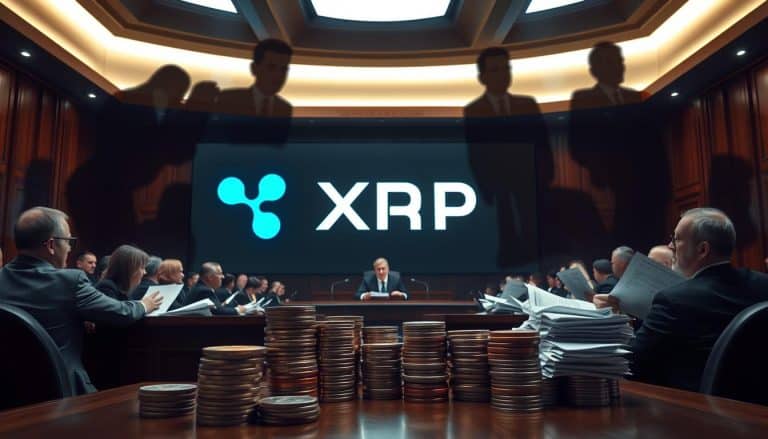Understanding Crypto Market Cap Essentials
Did you know Bitcoin’s value soared above $1 trillion in 2021? It became one of the most significant assets worldwide. The term market capitalization (market cap) reflects a cryptocurrency’s value and fame. People use it to make investment choices and sense the market mood.
In the past ten years, cryptocurrency has become a key part of the finance world. It presents an exciting option against traditional finance methods. The concept of market cap in cryptocurrency is crucial. It helps figure out a digital asset’s growth potential and size, like Bitcoin and Ethereum. We find the market cap by multiplying a token’s current price by how many are out there1. This approach, borrowed from old-school finance, gives us a peek into a digital asset’s market standing, importance, and rank.
Websites like CoinMarketCap point to the importance of understanding crypto market cap2. With giants like Bitcoin and Ethereum boasting market caps over $10 billion1, it’s clear that market cap is key in showing a cryptocurrency’s appeal and promise for the future2. Grasping the idea of market cap in cryptocurrency means you can see how well-liked a cryptocurrency is.
Stay updated with the latest cryptocurrency market cap and insights. This knowledge will help you make smart investment choices.
Key Takeaways
- Market cap is a crucial metric for evaluating cryptocurrency value and popularity.
- Bitcoin and Ethereum are prime examples of large-cap cryptocurrencies.
- Platforms like CoinMarketCap are essential for tracking market cap data.
- Market cap calculation involves multiplying the current price by the total number of coins in circulation.
- Understanding market cap can help guide your cryptocurrency investment decisions.
Introduction to Cryptocurrency Market Cap
Understanding the cryptocurrency market cap is crucial for those interested in digital currencies. It shows the size and value of different cryptocurrencies. This helps make better investment choices.
Overview
Since 2020, the cryptocurrency market cap has seen huge changes. It went from being under $200 billion to over $3 trillion3. Bitcoin stands out with a market cap of about 53 billion euros, leading the pack4. However, in January 2018, Bitcoin’s share fell to 32%, showing the market’s ups and downs4.
Importance in the Financial World
The importance of market cap in crypto is huge. It reflects the confidence investors have and affects investment choices. For example, Bitcoin’s market cap points to its vital role in long-term planning for cryptocurrency investments4. Market cap also sorts cryptocurrencies into groups like large-cap, mid-cap, and small-cap. This helps investors understand the risks and growth opportunities3.
Looking into market capitalization unveils the market’s potential. The significance of market cap in crypto is obvious. It’s key in assessing a cryptocurrency’s financial health and future.
Defining Market Capitalization in Cryptocurrency
Market capitalization tells us the total value of a cryptocurrency. It combines the price of a token with how many are out there. It’s key to knowing a cryptocurrency’s market size and importance.
Basic Explanation
Crypto market cap explained is simple: multiply a coin’s price by how many coins are available. For example, if a coin costs $100 and there are 25 million of them, its market cap is $2.5 billion5. This shows us the market value of a cryptocurrency. It lets us compare cryptocurrencies fairly.
Comparisons with Traditional Finance
In crypto, market cap is like how we value companies in regular finance. Bitcoin’s value shows how rarity can make prices soar, hitting a peak of $20,0005. If all 21 million bitcoins were out, their total value would be $1.48 trillion6. This lets investors understand the stability and risk between market cap and price.
Bitcoin’s huge market cap shows it’s a big deal, making up about 40% of the crypto world’s value7. In contrast, Ripple’s market cap is $20 million with 39 billion coins out there7. Looking at these numbers, we see big differences in value across cryptocurrencies. It shows how market cap affects investment choices and trends.
The Formula to Calculate Market Cap
Market capitalization in cryptocurrency is key for knowing a coin’s size and potential. Wondering how to figure it out? Just multiply the coin’s current price by its circulating supply. This method gives you a quick view of a coin’s market value.
Step-by-Step Process
To figure out the market cap, start with a few simple steps. First, find the current price of the crypto. Then, find how many coins are out there for people to buy. By multiplying these, you’ll get the market cap.
Imagine a token costs $50 and there are 1 million of them out there. Then, its market cap would be:
Market Cap = $50 (Current Price) * 1,000,000 (Circulating Supply) = $50,000,000. This shows you the value of a crypto asset quite easily.
Real-World Example
Take Bitcoin’s market cap as an example. Use its circulating supply and current price for calculation. With Bitcoin’s price at $24,000 and 19.1 million coins available, its market cap is:
Market Cap = $24,000 (Current Price) * 19,100,000 (Circulating Supply) = $458.4 billion8. And if we think about all 21 million Bitcoins, the diluted market cap hits:
Diluted Market Cap = $24,000 (Current Price) * 21,000,000 (Maximum Supply) = $504 billion8.
These numbers quickly show Bitcoin’s strong position and how investors feel about it. Knowing how to work out market cap helps with valuing coins and planning investments9.
Why Market Cap Matters in Crypto
Market capitalization is key to understanding the crypto market. Knowing the market cap helps investors see the size of cryptocurrencies. This lets them make smart choices based on important info. Let’s dive into why market cap is crucial in crypto.
Relative Size of Cryptocurrencies
Market cap shows the size and ranking of a cryptocurrency in the market. For example, big players like Bitcoin and Ethereum have a market cap over $10 billion1011. Mid-cap cryptos have a market cap between $1 billion and $10 billion. Small-cap cryptos have a market cap under $1 billion10. This way, you can understand cryptocurrency sizes and their market influence.
Investment Risk Assessment
Knowing the market cap in crypto is vital for risk analysis. A high market cap means the asset is stable and less prone to market manipulation10. On the other hand, lower market cap cryptos might grow fast but are riskier. By spreading your investments across different market caps, you can manage risk better10.
Indicator of Liquidity
Market cap also shows how easy it is to buy or sell an asset without changing its price. Cryptocurrencies with high market caps usually have a lot of trading activity. This makes it easier for investors to join or leave the market10. But, a crypto with high market cap and low trading volume might be harder to trade. So, liquidity is key when choosing your investments.
Investor Confidence
Market cap can also reflect how much investors trust a cryptocurrency. A high market cap often means investors feel good about an asset’s stability. Watching how the market cap changes can reveal the market mood and trends11. For example, a rising market cap signals growing investor confidence. A falling market cap suggests the opposite11.
Factors Affecting Cryptocurrency Market Cap
Many things influence the crypto market cap. This cap comes from multiplying a cryptocurrency’s price by its circulating supply12. To fully grasp the crypto market cap, understanding these elements is key.
Circulating Supply vs. Total Supply
The number of coins out there affects the market cap. Coins ready for trading are in the circulating supply. Meanwhile, total supply includes all coins, even those not yet available. Thus, more circulating coins can lower their value and affect the market cap13.
Impact of Token Price
The token’s price heavily impacts the market cap. A rise in a crypto asset’s price boosts its market cap. Price changes happen due to demand, investor feelings, how many people are using it, and actions by big investors13. So, the price changes of a token directly change the market cap12.
News and Market Sentiment
News, laws, and the economy’s state greatly affect market sentiment. Good news can make investors more confident, raising market caps. On the other hand, bad news can cause sell-offs, lowering market caps. Views of experts and new tech also sway market views13.
Trading Volume and Economic Factors
Trading volume matters as it shows how much interest and activity there is in a certain asset. Generally, more trading means higher market caps because it suggests more people are buying and selling. Things like inflation, interest rates, and global finance health also greatly influence the market cap1213.
What is Market Cap in Crypto?
Getting to know what is market cap in crypto is key for anyone diving into the crypto world. It’s how we measure the total value of a cryptocurrency’s circulating supply. We get a clear picture of a coin’s economic importance by calculating its market cap1452.
Let’s say a cryptocurrency named CryptoCoin has 1,000,000 coins out there. If each is worth €10, its market cap hits €10 million14. This simple math (Current Price of Coin x Circulating Supply) helps us grasp a coin’s economic scale5.
Market cap shines a light on how big and risky a cryptocurrency might be. We often sort cryptocurrencies based on their market cap:
- Large-Cap: These are giants with a market cap over $10 billion, like Bitcoin (BTC) and Ethereum (ETH). Seen as safer bets142.
- Mid-Cap: Falling between $1 billion and $10 billion, this group includes names like Dogecoin (DOGE) and Cardano (ADA). They’re riskier but have room to grow142.
- Small-Cap: Any cryptocurrency below $1 billion in market cap is in this zone. Think Immutable X (IMX) and Aave (AAVE). They’re the wildest, with high risk and potential rewards142.
In understanding the crypto market cap definition, we see its movement is tied to token prices, market trends, and investor feelings. The total market cap pools data from various coins, offering a fresh look at the industry’s health5. Keeping an eye on market cap fluctuations is crucial for making smart moves in this ever-changing field.
Market Cap and Cryptocurrency Investment Strategies
Understanding market cap is key when creating cryptocurrency investment plans. It’s a vital metric for making investment decisions. It helps assess risks and diversify portfolios. Cryptos with a high market cap are usually seen as safer bets. They have stability and a solid market reputation.
Using Market Cap in Decision Making
Market cap is essential for smart investment choices. It shows the size, potential, and stability of cryptos. Big market cap coins like Bitcoin and Ethereum are viewed as more secure. They offer a safety net against the riskier small coins15. By looking at market cap, investors understand market size and growth opportunities. This aids in balancing risk and reward16. Plus, a high market cap ($1 billion or more) means less risk and more liquidity due to bigger trading volumes16.
Diversification and Growth Potential
Diversification is crucial for crypto investment strategies, with market cap being a vital tool. Investing in large-cap cryptos brings stability but might limit high-gain chances with smaller-cap assets. Market cap weighting often focuses on big players like Bitcoin and Ethereum15. Yet, using different approaches like equal weighting or sector-specific diversification can boost growth and risk management15. It’s important to review and adjust your portfolio regularly. This ensures it matches current market caps and reduces the effects of market changes15.
Categorizing Cryptocurrencies by Market Cap
Understanding the cryptocurrency market starts with categorizing by market cap. Market cap shows the total value of a digital asset. It shines a light on the asset’s size and growth potential. Cryptocurrencies are split into three groups: large-cap, mid-cap, and small-cap. This split helps investors weigh risk against potential rewards.
Large-Cap Cryptocurrencies
Large-cap cryptocurrencies are valued over $10 billion. This group includes big names like Bitcoin (BTC), Ethereum (ETH), Tether (USDT), and USDC. They’re usually seen as more stable than smaller coins, thanks to their solid market standing. Bitcoin alone makes up about 52% of the whole crypto market cap14. Large-cap coins are often chosen for safe, long-term investing1.
Mid-Cap Cryptocurrencies
Mid-cap cryptocurrencies, with values between $1 billion and $10 billion, include Dogecoin (DOGE), Cardano (ADA), Litecoin (LTC), and Polygon (MATIC)14. These offer a middle ground between risk and possible gains. They might appeal to those seeking growth1.
Small-Cap Cryptocurrencies
Small-cap cryptocurrencies fall below the $1 billion mark. Examples include Immutable X (IMX), Axie Infinity (AXS), and Aave (AAVE)14. They’re known for high volatility but also the chance for big rewards1. Investors in these coins should brace for ups and downs and higher risks1.
Sorting cryptocurrencies by market cap helps investors evaluate risk and diversify. It’s key for making smart choices in the fast-changing crypto world. This strategy is vital for informed investing.
Risks of Relying Solely on Market Cap
It’s key to know the risks of just using market cap to make choices in the crypto world. Even though market cap is often used, it’s risky to rely on it alone. This can lead to missing out on big risks.
Price Volatility
Price swings are a big risk when only looking at market cap. Crypto markets change quickly, making values go up and down. This makes market cap a shaky way to judge an investment’s worth17.
Potential for Price Manipulation
Small or new digital currencies could face price tricks. This can pump their market caps, fooling investors about their true worth17. It shows why you shouldn’t only look at market cap when investing.
Overlooked Factors
Just watching market cap means missing other key things. You might not see how useful the tech is, or how good the team is. Like Ethereum, which got better with a new update in September 202218. Or knowing that only El Salvador sees Bitcoin as real money by June 202518.
- Large-cap digital currencies are worth over $10 billion, like Bitcoin (BTC) and Ethereum (ETH)17.
- Mid-cap digital currencies are valued between hundreds of millions and a few billion dollars
- Small-cap digital currencies range from tens of millions to a few hundred million dollars17.
To really get the risks of sticking to market cap, it’s smart to look at everything. Adding different metrics and key details makes your investment choices stronger and safer.
Common Misconceptions About Market Cap
When we talk about market cap in cryptocurrencies, some myths often come up. It’s important to clear these up to choose investments wisely.
Market Cap vs. Inherent Value
Many think market cap shows a cryptocurrency’s real value. But that’s not always true. A high market cap might show good market view and possible liquidity. It doesn’t always match the project’s real worth. The Markets in Crypto-assets (MiCA) Regulation wants to keep consumers and investors safe. It aims for financial stability and innovation19. But, it doesn’t mean a crypto asset has real value by itself. Look into the project’s technology and team19. Don’t just use market cap to decide.
Fluctuations in Market Cap
Some think market cap stays the same. But it can change a lot because of token prices and supply changes. Another myth is that crypto gains aren’t taxed. In the U.S., the IRS sees crypto as property. So, profits from buying and selling are taxed19. Market cap changes can mislead investors. They might think value changes are just from market views, not real economic conditions.
Is a Higher Market Cap Always Better?
It’s wrong to say a higher market cap is always best. Yes, it means more investment and liquidity in a cryptocurrency. But it doesn’t ensure it’s a better investment. Like how high-yield bonds are riskier because of lower credit ratings20. A cryptocurrency with a high market cap might be overvalued due to speculation. That’s why examining the market cap with other data is key to see an investment’s real value.
In conclusion, knowing these market cap myths can lead to better investment decisions. Always look beyond market cap stats at the cryptocurrency’s fundamentals.
Staying Updated with Market Cap Changes
It’s key to keep up with the fast-changing world of cryptocurrency. To do this, use tools that track market cap changes. These tools help you stay aware and make smart choices on time.
Using Monitoring Platforms
CoinMarketCap and CoinGecko give you live updates on market cap changes. They show how much of the market Bitcoin controls, which is about 52%14. This information is vital for making good trading and investment choices.
Tools and Resources Available
There are many tools to help you keep up with market cap changes. TradingView and CoinCodex offer detailed analytics and news. They help you stay on top of market shifts. Using them often is important for adjusting your strategy to the market.
It’s also good to know about different sizes of market caps, like large-cap, mid-cap, and small-cap14. But, don’t just focus on market cap when investing. Other factors, like how prices can change quickly and the risk of price manipulation, are also important14.
With the right platforms and tools, you can easily follow the quick moves of crypto trading. This ensures you are always informed about market cap changes. And, it helps you make choices that are based on strong information.
Practical Applications for Investors
Knowing how to use market capitalization in crypto investing is key. It gives insights into a crypto asset’s growth and stability. This knowledge acts as a guide to the health and trends of the market.
Assessing the Market Health
Market cap is vital for checking the health of crypto markets. The crypto market’s value, around $2 trillion, shows its robustness21. Bitcoin, with less than half the market’s value, signals investor confidence and adoption rate21.
By looking at these numbers, you can understand where the market is heading. This helps you know the risks and how mature the market is.
Spotting Investment Opportunities
Market cap is crucial for finding investment chances. The stablecoin market, for example, is less than 10% of the crypto world. This suggests areas that might grow21. Also, a different valuation method shows Bitcoin’s market cap as 1/3 of its traditional value21.
These insights help investors choose wisely. They can improve profits and understand the risks.
“Investing in fundamentally strong projects to include crypto in a balanced portfolio is crucial for long-term success.” – Investopedia Learn more21
Analyzing High Market Cap Cryptocurrencies
The crypto world is ruled by some big players. These have become top names through fresh ideas, practical use, and firmness. In this part, we focus on Bitcoin, Ethereum, and Tether. We highlight their crucial roles in the world of crypto.
Bitcoin (BTC)
Bitcoin is the first of its kind and remains at the top. It makes up about 52% of the whole crypto market as of October 18, 202514. This highlights Bitcoin’s role as digital gold. It’s seen as a safe choice amidst the ups and downs of regular markets. For the latest on Bitcoin’s position and its effects, check out this SPGlobal report.
Ethereum (ETH)
Ethereum is known for its smart contracts and decentralized apps. It stands just behind Bitcoin, thanks to its versatility and new ideas. Its role in DeFi projects and NFT markets drives its market dominance. It’s vital for investors to look into Ethereum’s influence when thinking about spreading out their investments14.
Tether (USDT)
Tether differs from Bitcoin and Ethereum as it’s a stablecoin. It aims to bring steadiness to the unpredictable crypto markets. Being tied to the US dollar, Tether acts as a link to regular currencies. Its stable market cap makes it a favorite for traders looking for safety in turbulent times. To really get how Tether stays stable, diving into a comprehensive analysis is a good idea.









 Bitcoin
Bitcoin  Ethereum
Ethereum  Tether
Tether  XRP
XRP  USDC
USDC  TRON
TRON  Lido Staked Ether
Lido Staked Ether  Dogecoin
Dogecoin  Figure Heloc
Figure Heloc  Cardano
Cardano  WhiteBIT Coin
WhiteBIT Coin  Bitcoin Cash
Bitcoin Cash  Wrapped stETH
Wrapped stETH  Wrapped Bitcoin
Wrapped Bitcoin  USDS
USDS  Wrapped eETH
Wrapped eETH  Binance Bridged USDT (BNB Smart Chain)
Binance Bridged USDT (BNB Smart Chain)  Chainlink
Chainlink  LEO Token
LEO Token  Zcash
Zcash  Monero
Monero  WETH
WETH  Coinbase Wrapped BTC
Coinbase Wrapped BTC  Stellar
Stellar  Ethena USDe
Ethena USDe  Hyperliquid
Hyperliquid  Litecoin
Litecoin  Canton
Canton  Avalanche
Avalanche  Sui
Sui  Hedera
Hedera  USDT0
USDT0  Dai
Dai  sUSDS
sUSDS  Shiba Inu
Shiba Inu  Toncoin
Toncoin  World Liberty Financial
World Liberty Financial  PayPal USD
PayPal USD  Uniswap
Uniswap  Cronos
Cronos  Ethena Staked USDe
Ethena Staked USDe  USD1
USD1  Mantle
Mantle  Polkadot
Polkadot  Rain
Rain  MemeCore
MemeCore  Bitget Token
Bitget Token  OKB
OKB